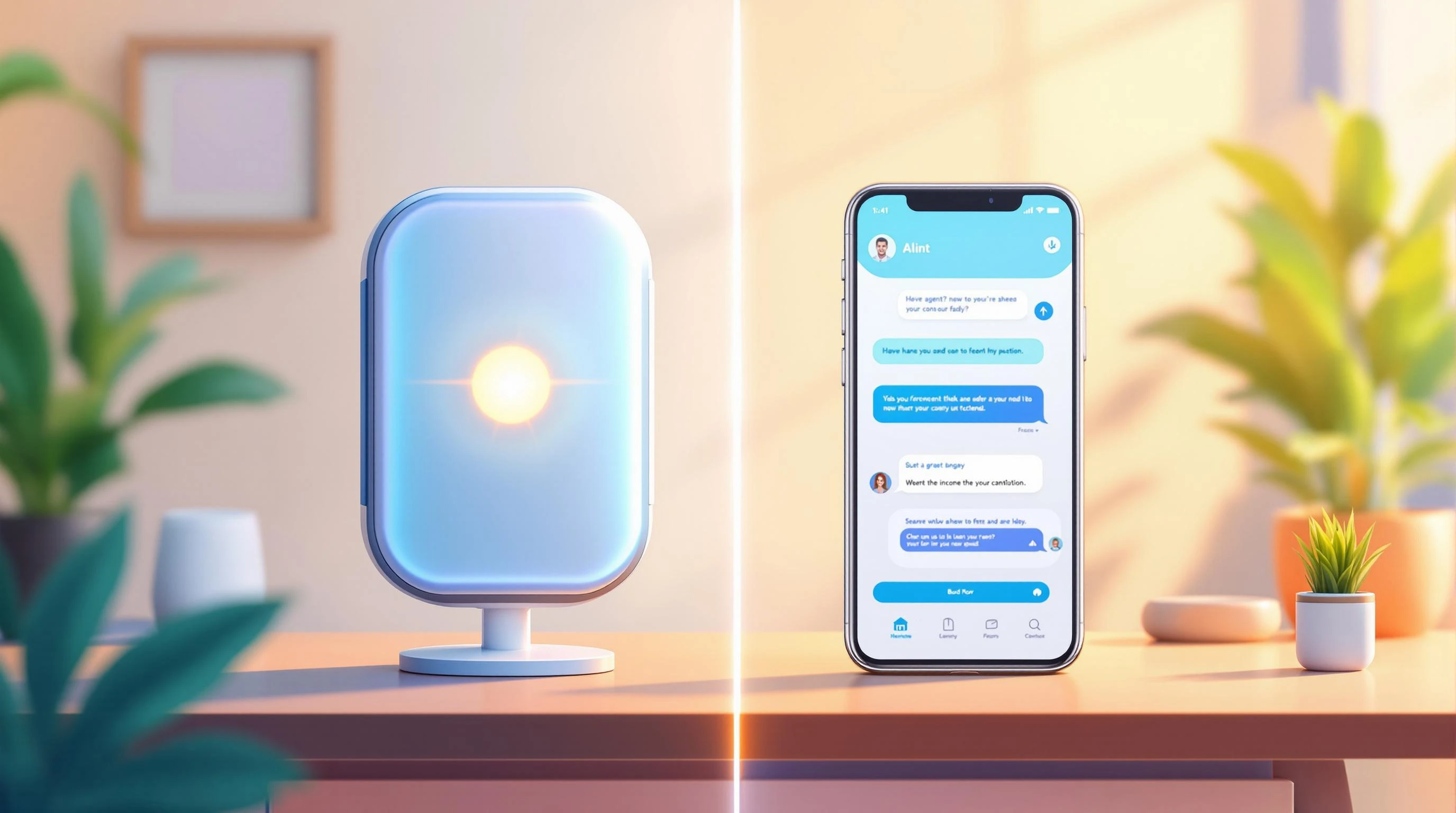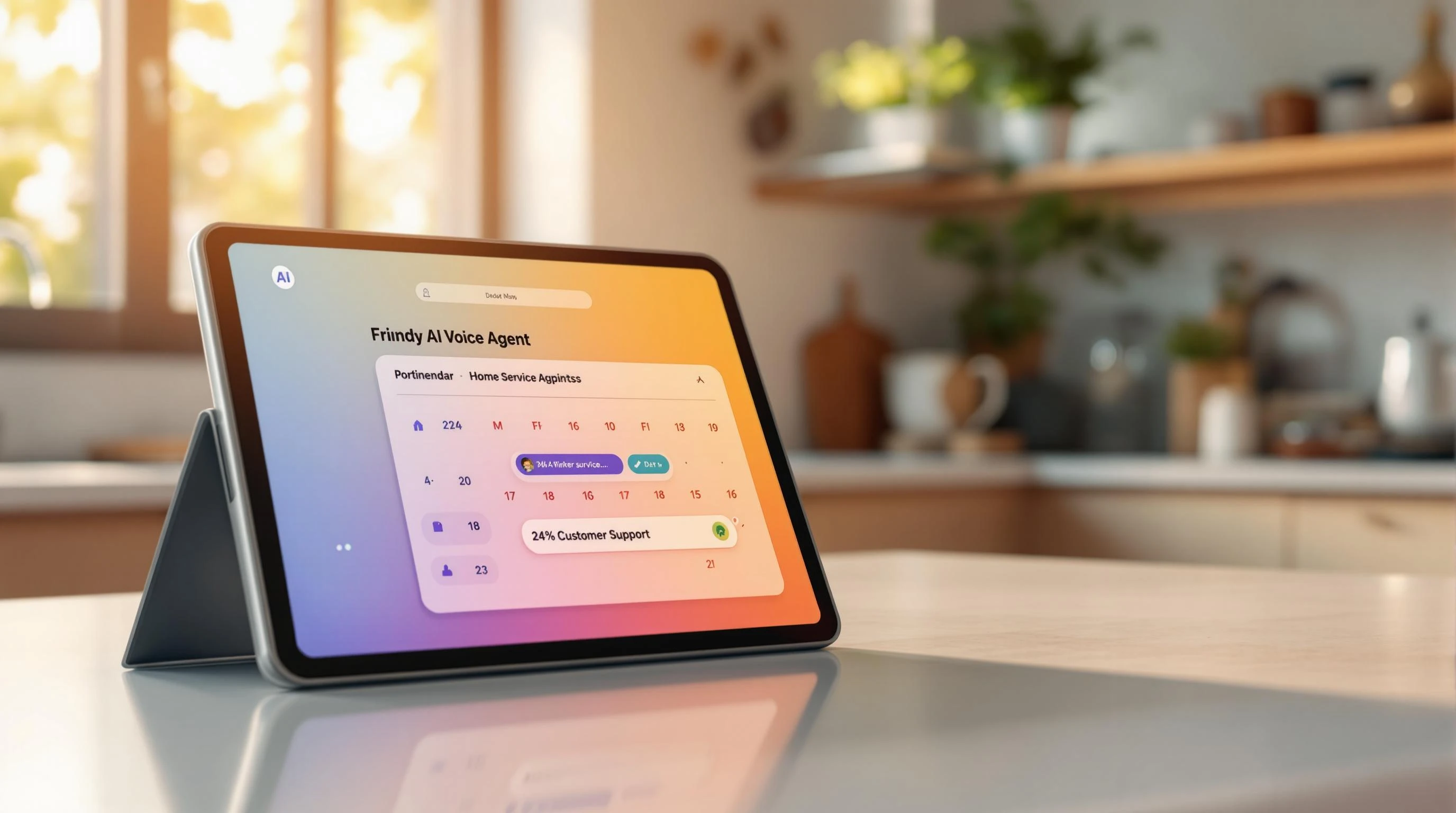
Jan 16, 2025
6 min read
Voice agents and chatbots are both AI tools for customer interaction, but they serve different purposes. Here's a quick breakdown:
Voice Agents: Use spoken language, ideal for hands-free tasks like driving or cooking. Found on devices like smart speakers and use advanced AI for natural conversations.
Chatbots: Use text-based communication, perfect for websites or apps. Handle straightforward queries with fast, written responses.
Quick Comparison
Voice agents are great for multitasking scenarios, while chatbots excel in quick, text-based interactions. Choose based on your business needs and customer preferences.
Differences Between Voice Agents and Chatbots
Communication Methods
Voice agents focus on spoken language, enabling natural conversations, while chatbots handle text-based interactions. For instance, in banking, voice agents use voice biometrics for hands-free authentication, making them ideal for situations where accessibility or multitasking is important.
Platforms for Interaction
Voice agents typically run on devices like smart speakers or in-car systems, designed for hands-free usage. Chatbots, on the other hand, are found on websites and messaging apps, offering quick, text-based support that users can revisit as needed.
Integration Needs
Voice agents require advanced systems for voice recognition, natural language processing (NLP), and hardware like microphones and speakers. They also need to adapt to varying sound environments. Chatbots, by contrast, rely on simpler text processing and compatibility with platforms like websites or messaging apps.
"AI agents have moved beyond these static scripts and use large language models (LLMs) to better understand human language which enables them to handle more complex interactions." - Pedro Andrade, Talkdesk [3]
These differences highlight how each tool is tailored for specific environments and use cases.
Comparison Table: Voice Agents vs. Chatbots
Here’s a quick breakdown of the key differences:
Voice agents are advancing with AI to handle more nuanced conversations, while chatbots remain a go-to for quick, straightforward answers. These distinctions shape how each fits into today’s customer service strategies.
Applications of Voice Agents and Chatbots
Voice Agents in Use
Voice agents are making waves across various industries. In healthcare, they allow patients to book tests and schedule appointments remotely, making the process safer and more convenient. Banks are also benefiting, using voice agents to handle routine tasks like checking account balances or finding nearby ATMs. Plus, voice biometrics add an extra layer of security [4].
Nike's collaboration with Google is a prime example of voice commerce in action. Their voice-activated shopping feature for Adapt BB sneakers was a hit, with the entire stock selling out in just 6 minutes [2].
These tools shine in hands-free, natural interactions. Meanwhile, chatbots are the go-to solution for text-based communication, offering speed and efficiency.
Chatbots in Use
Chatbots excel in industries where written communication is key. They handle everything from answering FAQs to managing complex booking systems. With support for 200+ voices in 32 languages, chatbots are widely used in areas like hospitality and real estate.
In eCommerce, chatbots play a big role in customer service by managing:
Voice-assisted eCommerce is also booming, with global transactions hitting $19.4 billion [2]. This shows how AI-powered tools are becoming an essential part of customer service.
How Voice Agents and Chatbots Work
AI Features
Voice agents and chatbots use AI in distinct ways to handle user interactions. Voice agents rely on natural language processing (NLP) and machine learning to manage conversations that require context and adaptability [1]. On the other hand, chatbots operate using pre-written scripts and basic intent recognition, making them ideal for straightforward, structured queries.
Here’s a quick comparison of their capabilities:
Both tools benefit from advancements in Large Language Models, which add a layer of sophistication to their performance.
Large Language Models
Large Language Models (LLMs) have raised the bar for both voice agents and chatbots by improving their ability to interpret and respond to natural language. For voice agents, LLMs enhance their ability to understand complex language patterns and maintain conversational flow. Chatbots, in turn, deliver more accurate text-based responses.
In practical use, LLMs have transformed industries like banking. AI-powered voice agents can now handle intricate account queries with precision, while also ensuring security and offering a personalized experience [2]. The integration of voice recognition with LLMs has proven especially useful in hands-free tasks and solving complex problems.
Voice agents equipped with LLMs are particularly strong in:
Understanding requests that rely on context.
Recognizing diverse accents and speech patterns.
Tailoring responses based on user data.
These improvements demonstrate the expanding capabilities of AI tools. However, selecting the right tool depends entirely on the specific needs of your business.
Choosing Between Voice Agents and Chatbots
Assessing Your Needs
To decide between voice agents and chatbots, start by evaluating how your customers interact with your business and the platforms they prefer. Also, factor in your resources, such as your budget and technical capabilities.
Once you’ve assessed these factors, the next step is understanding where each solution works best.
When Voice Agents Are Best
Voice agents shine in cases where hands-free interaction and natural conversations are crucial. For example, WePickUpThePhone implemented a multilingual voice agent system and saw a 35% boost in customer satisfaction while cutting response times in half. This makes voice agents an excellent choice for businesses with global, multilingual needs.
Voice agents are ideal for:
Healthcare providers managing appointment reminders or vaccination schedules
Banks offering real-time, on-demand services
Retailers delivering multilingual customer support
When Chatbots Are Best
Chatbots are better suited for businesses that rely on text-based communication and want a faster, simpler setup. They’re also more cost-effective when it comes to development and integration [1].
Chatbots work well if your business:
Primarily operates through digital channels
Handles routine inquiries from customers
Requires a quick, easy-to-deploy solution
Manages large volumes of simultaneous text interactions
Ultimately, the choice between voice agents and chatbots depends on your industry needs and how you want to engage with your customers [2][3]. Both options offer unique strengths tailored to different business priorities.
Conclusion: Selecting the Right Tool for Customer Engagement
Key Takeaways
Voice agents and chatbots each play distinct roles in modern customer communication. Voice agents are perfect for hands-free, conversational tasks, making them a strong fit for industries like healthcare and banking. On the other hand, chatbots excel in handling straightforward, text-based inquiries on digital platforms.
Choosing between the two requires a clear understanding of their differences and how they align with your business needs.
Practical Tips for Businesses
The decision between voice agents and chatbots boils down to your specific goals and operational requirements. For example, basic chatbots might not be sufficient if your business requires handling more complex customer interactions.
Here’s what to consider for a successful rollout:
Infrastructure Compatibility: Ensure the tool integrates seamlessly with your existing systems.
Customer Preferences: Understand how your audience prefers to interact - voice or text.
Query Complexity: Match the tool’s capabilities to the complexity of customer inquiries.
Before committing to a full-scale deployment, start with a pilot program to gauge performance and iron out any issues.
Additionally, keep these factors in mind:
Current technical capabilities and ease of integration
Customer interaction patterns and behaviors
Resources available for setup and ongoing maintenance
Industry-specific requirements, including compliance standards
It’s also worth noting that as AI technology advances, both voice agents and chatbots will continue to improve. Regularly reviewing and updating your chosen solution is key to staying ahead in customer engagement.
FAQs
What is the difference between voice bot and chatbot?
Voice bots interact through spoken language using voice recognition, while chatbots communicate via text on websites or apps [1]. This distinction defines how each tool addresses specific business needs.
In practice, both technologies improve customer interactions. Companies using voice assistants have seen a 20% drop in customer service calls and reduced churn rates [2].
"AI agents have moved beyond these static scripts and use large language models (LLMs) to better understand human language which enables them to handle more complex interactions." - Pedro Andrade, Talkdesk [3]
Voice bots are great for hands-free tasks and deeper conversations, while chatbots shine in quick, text-based support. Knowing these differences helps businesses choose the right tool for their customer engagement strategies [1][3].






